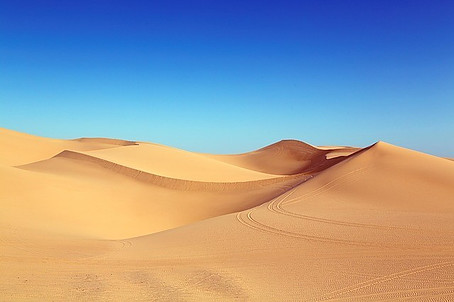
Deserts cover 1/5 of the Earth’s surface. They are dry, barren lands where survival is probably the most difficult. Deserts are known to occur in parts of the world where the air currents that rise from the Equator and have already shed their moisture, descend upon and are re-warmed. This, in turn, causes them to absorb what little moisture may remain in the environment.
There are rarely any clouds to provide cover from the sun or to help retain moisture at night. This causes the temperatures to range from a high of 136° F in the shade during the day to below freezing.at night. Only small parts of the world’s deserts are sand, the majority of them are composed of flat gravel cut by dried-up watercourses. The wind has blown the sand away, piling it up in the low-lying areas. Other types of deserts are composed of wind-carved mountains, dried mudflats or even lava flows.
Because of the great temperature differences between night and day in most deserts across the world, condensation of any moisture in the air during the night can make water available. However, there are some deserts when the temperature range isn’t that great and therefore there is little condensation. As a consequence, both plants and game are comparatively rare.
Sometimes, there will be sparse grass and thorny bushes, but believe it or not, even in these barren conditions, some form of life seems to survive. But, it can be difficult to spot unless you know where to look.
Dust and Sandstorms may occur at certain times of the year, making it nearly impossible to see and demanding a large amount of protection to prevent sand from entering every orifice of you body. Also, dust devils, desert whirlwinds similar to tornadoes are quite common.
When rain finally does come, and in some places it may be years if it even comes at all, it may be in the form of torrential downpours which will lead to flash floods before it’s absorbed by the parched ground. This usually provides a brief blossoming of vegetation and the emergence of certain species, like the Spadefoot toad of Arizona, for rapid mating and reproduction.